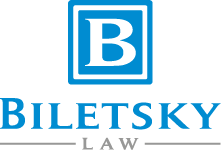Fitness Releases
 When going to work out in a gym, compete in a competition, or perform on the set of a production, you will likely be confronted with a release document to sign. While these release documents come in many shapes and sizes, the basic function of all of the releases is the same, which is to relieve the other party from liability.
When going to work out in a gym, compete in a competition, or perform on the set of a production, you will likely be confronted with a release document to sign. While these release documents come in many shapes and sizes, the basic function of all of the releases is the same, which is to relieve the other party from liability.
In gyms, the predominant concern is that the gymnasium is providing a facility and equipment which you could potential injure yourself on. Gyms often require releases when signing up or when visiting to help shield themselves from liability.
When competing in a fitness or athletic competition, you are usually required to sign a waiver and a release form as well. With a competition, there is additional concerns beyond providing the facility and equipment in that you are also pushing your abilities to the limit and are at a greater risk of injuring yourself.
With regards to filming releases, regardless of the type of filming that you are involved with, there is undoubtedly going to be some kind of release or waiver which protects the production company from liability (and also allows them to use your image, amongst other things). This is even more so the case when dealing with productions that involve some kind of athletic or fitness performance. The importance behind these types of releases is the fact that you are being given access to certain facilities. Furthermore, you may also be given instructed to perform certain activities where there is a high risk of death or serious bodily harm.
So, what’s in these agreements that act to protect these gyms, competitions, and productions from liability?
Acknowledgment of Risk
One of the first parts to the release is going to be a section where you formally acknowledge the inherent risk in participating in whatever it is that you are signing up for. Whether it be the 30 foot rock wall at the gym or the sword fight scene that you are featured in. If there is some kind of activity or thing that carries with it a risk of injury or death, this paragraph will make you acknowledge that such a danger exists.
Assumption of Risk
This section comes with it more history and controversy than most other sections. There have been cases upon cases dealing with the assumption of risk and whether they are against public policy and therefore invalid. One of these arguments is the fact that although the activity may be inherently dangerous, the operator of the activity still has a duty of care to keep you safe.
There are other logical considerations to take into account as well. For instance, sky diving has an inherent risk of harm that comes with partaking in the activity. In a world where the assumption of risk always prevails, the sky diving operator wouldn’t be held to such a high duty of care since you already assumed the risk. In such scenarios, what need is there to keep all of the safety procedures in place or the maintenance of the plane at top performance?
Release of Liability
You’ve acknowledged the risk, you’ve assumed the risk, and now you’ve taken the next step and released the other party from liability. This is the third step in the release where you agree that regardless of what happens, that the operator is not liable and that neither your nor anyone who may succeed you (in the event of death or serious bodily harm) will be able to bring any claims against them. Some of these releases will go pretty far as to release any kind of liability, even so far as to release them from liability resulting from their own negligence.
Disclaimer and Waiver of Warranties
Depending on the service or product, there are certain inherent warranties that come with the product or service. In certain instances these may apply more towards products themselves (think vitamins and supplements) where you are signing off that you do not expect the product to perform in a certain manner.
Miscellaneous
There are of course other provisions. Depending on the activity or situation, there may be terms which require you to pay for all of your own medical expenses, but which authorizes the establishment or company to call emergency personnel in the event of your injury. One reasons for this is that they do not want to pay your medical expenses. However, they also do not want your condition to worsen while you are injured on their premises. So instead, they want to have the authorization to be able to call and get you out of there as soon as possible.
Whether you own the establishment, are in charge of production, or are the athlete that is signing off on the waiver, it is important that you be aware of what kind of terms you are agreeing to with liability waivers and releases.
For more information on liability releases or for legal assistance regarding releases, contact Biletsky Law.



